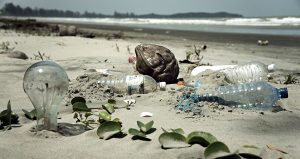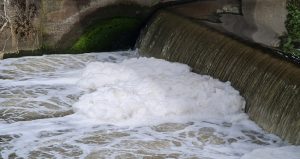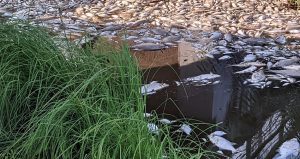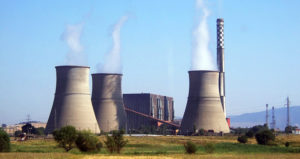Marseille: New underground water basin protects Calanques National Park

-
 Annemarie Geleijnse
Annemarie Geleijnse
Share article:
The futuristic entrance of the Géolide wastewater treatment plant in Marseille. Picture: Suez
A retention basin with a storage capacity of 50.000 m3 is improving Marseilles wastewater treatment plant (WWTP). The new basin enables it to treat wastewater and storm water during periods of heavy rainfall. As a result less untreated wastewater will flow into the Calanques National Park. The new retention basin is one of the SUEZ projects being showed to the international press on the eve of World Ocean Day.
One wouldn’t expect to find an underground wastewater treatment plant while entering the futuristic entrance on a huge square aside the Olympic Marseille Stade. This Géolide plant is said to be the biggest underground WWTP in the world. It processes 78 million cubic metres of domestic and industrial wastewater from Marseille and 16 surrounding municipalities annually. “It’s the scale that makes Géolide exceptional”, said Bertrand Camus, CEO Water France for Suez, after being asked by Water News Europe about the technical methods used in this plant. The WWTP is not using state-of-the-art technology and operates on traditional physical-chemical and biological treatment. Camus admits that in the battle against pollution, like for instance micro plastics and pharmaceuticals, adding extra technology such as powdered activated carbon could be valuable, but he sees that as ‘the next step’. Camus: “Suez is now assembling several methods in Marseille; it is the combination that gives them their impact.”

Bertrand Camus is in France CEO Water for Suez. Picture: Suez
Underground
The Géolide plant is build underground because of the geographical limits of Marseille. The French city is surrounded by mountains and the sea. Going underground enabled Suez to treat wastewater in the middle of a domestic area without disturbing people with bad smells. For the workers the situation is less convenient. They have to work under quite difficult circumstances, because they have to wear gasmasks during their job to protect their health.
During dry periods the plant is big enough to treat all Marseilles wastewater plus the wastewater of the sixteen surrounding municipalities. Though when it comes to heavy rains and violent storms – not uncommon in this area between September and November – the capacity isn’t big enough. Until now it resulted in a discharge of two million litres of untreated wastewater into Calanques national park every year.
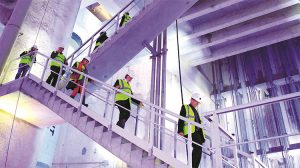
The brand new basin is 30 meters deep. Picture: Water News Europe
Ganay basin
To prevent this overflow Suez subsidiary SERAMM build an – again – underground solution. A 300 meter long tunnel leads from the Géolide plant to the new Ganay retention basin. During storms runoff water can be stored until a total capacity of 50.000 m3. When full, the basin is – as regulated by law – emptied within 24 hours. Vertigo doesn’t help when you visit the brand new basin; it is 30 meters deep, with a diameter of 56. With an investment of 50 million euros and three years of construction, the basin is now finally tested and shall become operational this autumn.
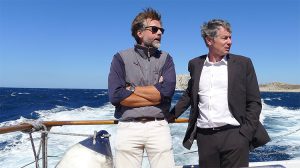
On the right, Hervé Madiec, Suez-director Water for the Mediterranean region. Picture: Water News Europe
Impact
“The idea is to collect as much water as possible in order to minimize environmental damage”, explained Hervé Madiec, director for Water at Suez in the Mediterranean region. The retention basin, combined with Suez’s dynamic storm water management solutions, will prevent 1 million m3 from flowing into Calanques National Park. That is half of the total amount of untreated, discharged wastewater. “However, the impact of the new basin will be huge, because the retention basin takes out the first runoff water, which is the most polluted. This water washes the waste and pollutants off the roadways”, stated Madiec.
Control room
The wastewater treatment facilities, including the new Ganay tank are controlled from Le Ph@re, a control room which provides a real-time view of the networks and facilities, as well as modelling tools. These tools can be used to anticipate during periods of intense rainfall, using the storage capacity of the Ganay tank.


